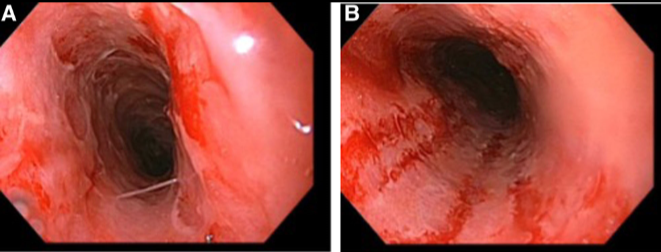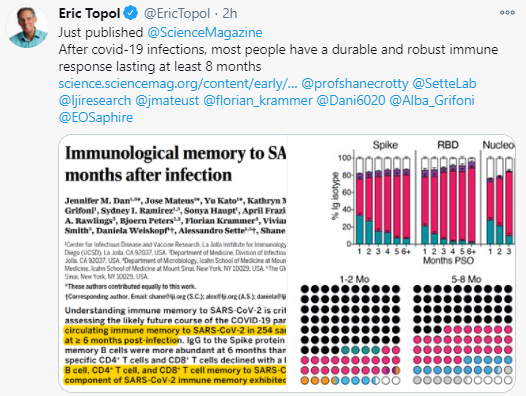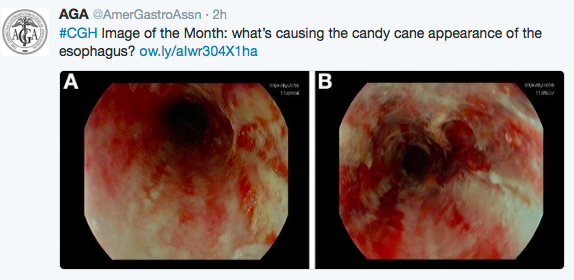L Pace, K McGoogan. JPGN Reports 4(3):p e327, August 2023. Open Access! Vaping Induced Severe Erosive Esophagitis
This case report describes a 17 yo with sore throat, odynophagia chest pain, and dysphagia associated with vaping. His symptoms resulted in hospitalization and he underwent an EGD on day 4 after symptoms had not improved with multiple empiric therapies.
EGD findings included .
- Circumferential erosive or exudative lesions) esophagitis with bleeding found throughout the entire esophagus. Given the lack of infectious etiologies, the authors made a diagnosis of vaping-associated esophagitis
- H pylori gastritis

My take: When adolescent patients present with esophageal symptoms, inquiring about exposure to vaping along with medications known to cause pill-esophagitis, is worthwhile.
Related blog post: Review: Infectious Esophagitis


